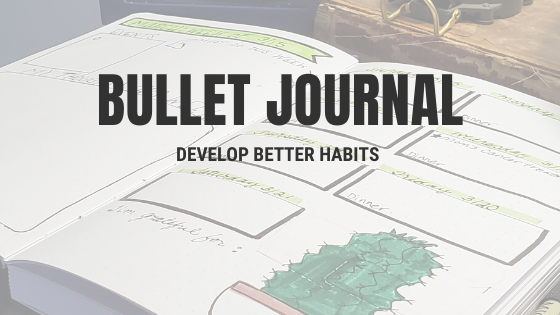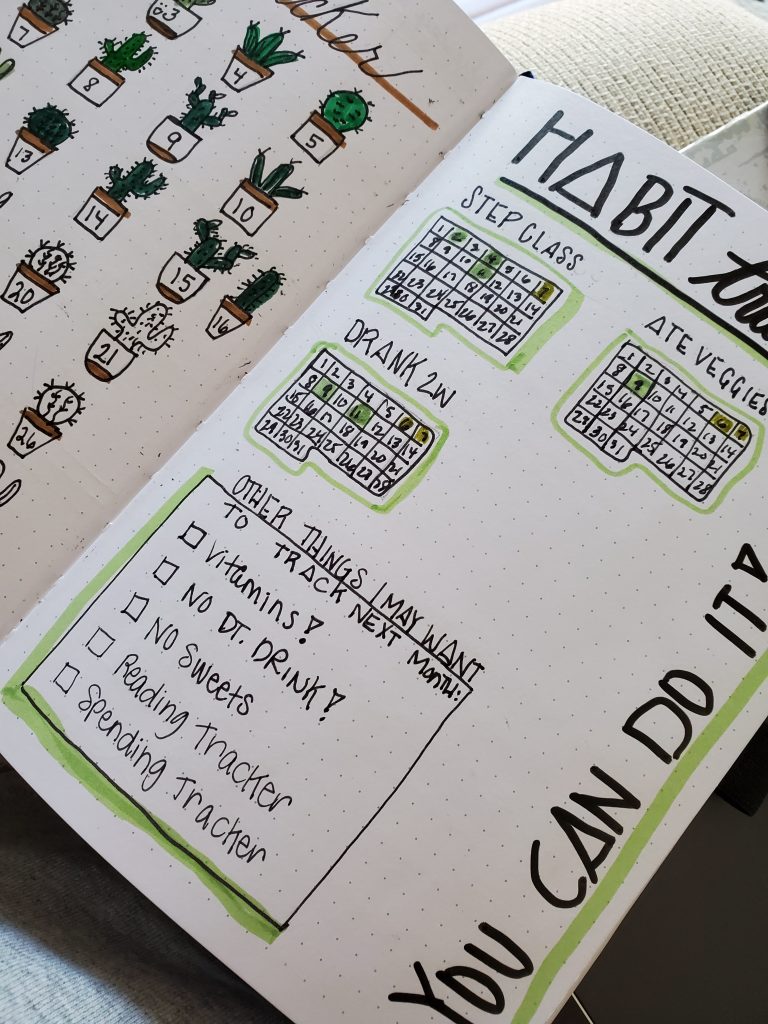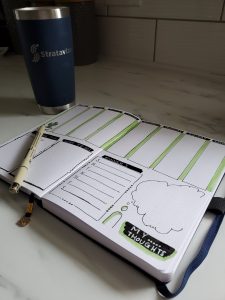The Bullet Journal Method is blowing up the Internet. However, if you’ve never heard of the Bullet Journal or you are not sure why you would want to use a bullet journal. You’re not alone. I just learned about the Bullet Journal Method and it’s helping me develop better habits. If you want to develop better habits, you may want to use a bullet journal too.
I’ve written down my goals, ideas, inspirations, quotes, and random thoughts for years. I often refer back to the stack of my old notebooks, dating back 5 years, on my desk. For instance, just last week I was working on intellectual property and remembered an idea I had written about years ago, this sent me into a frenzy of searching through old journals looking for the ideas I wrote down.
There’s just something about the act of writing down my thoughts that is more powerful than typing them into a computer. Research supports the best way to remember something is to take notes by hand.
In a random happenstance, I was in a meeting with a fellow journaler. When she opened her notebook, I looked over to see her sleeping tracker. I thought it was a neat way to track her routine. She and I both share a love for writing down our thoughts and ideas so, we briefly discussed the notebook she was using. I tucked the thought away and went on with the meeting.
Fast forward a few weeks later, I was in a meeting with my business coach. She too uses a journal or notebook to capture meeting notes, blog ideas, and random thoughts. While in our meeting, she happened to open her book and I saw a similar tracker. However, she was not tracking her sleep, she was tracking gratitude.
Clearly, these two people knew something I didn’t know. My business coach went onto explain she was using loosely using the bullet journal method. Now, I was curious. If you’re curious, let me explain.
What is the Bullet Journal Method?
The Bullet Journal Method often referred to as BuJo, began with Ryder Carroll. From the official Bullet Journal website, he writes…..
Diagnosed with learning disabilities early in life, he was forced to figure out alternate ways to be focused and productive. Through years of trial and error, he developed a methodology that went far beyond simple organization. Now he focuses on helping others learn what the Bullet Journal method is truly about: the art of intentional living.
Ryder Carroll
The website further explains Bullet Journal® is a methodology. It’s best described as a mindfulness practice disguised as a productivity system. It’s designed to help you organize your what while you remain mindful of your why. The goal of the Bullet Journal is to help its practitioners (Bullet Journalists) live intentional lives, ones that are both productive and meaningful.
To learn the basics I highly recommend Ryder Carroll’s YouTube videos and his Ted Talk How To Declutter Your Mind from 2017.
Carroll’s original BuJo is simplistic. I started to search for other bullet journal users to pick up best practices and inspiration. WOW! There are so many versions! It is amazing! However, do not get overwhelmed or intimidated if you are not an artist. Trust me, it’s easy to do when you see some of the creative work out on YouTube, Pinterest and Instagram.
Developing Better Habits Using BuJo
My favorite thing about the Bullet Journal are the trackers. For example, my favorite trackers are the Mood Tracker and the Habit Tracker. I wrote a little bit about how the Mood Tracker is helping me measuring my level of happiness in this recent article. Today, I want to share how using a Habit Tracker can help you develop better habits as a leader.
Having a habit tracker enables you to reflect each day on completing your highest priority habits. Above all, this system is about flexibility. It’s YOUR bullet journal – YOU create it to work for YOU. It’s not a pre-printed journal where you have to conform to their format.
Habits To Track for Leaders:
- Gratitude – Track how often you thank your team members or partners.
- Management Routines – Track management routines. For example, weekly pipeline management or ending your day with zero unread emails.
- Creativity Time – Track how many days you blocked and used the time for creative work.
- Completed To-Do – Track how many days in a month you complete your daily to-do list!
Finally, as I shared in a recent article on Fast Company, don’t feel compelled to be an artist. Just go back to what makes it work for you. You don’t have to buy an expensive book or pen. Begin where you are.
Lets inspire each other! Follow me and Stratavize on Facebook, Twitter, Instagram or LinkedIN @Lauralee Hites and Stratavize’s LinkedIN business page.
You can always drop me a line at lauralee@stratavize.com. Interested in learning more about how Stratavize serves our clients? GREAT! Start by visiting our website.



